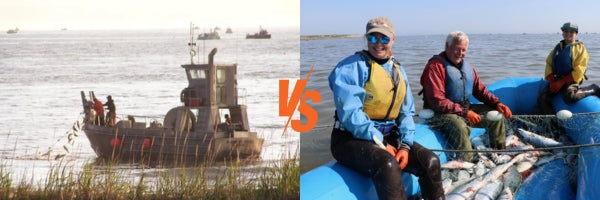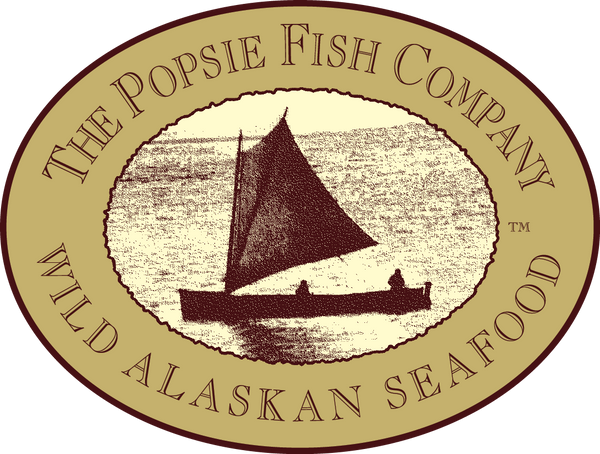
Drifting vs Set Netting
When I tell people that my family runs a commercial salmon fishing operation in Bristol Bay, Alaska, they invariably ask questions about what it's like working on a boat. They are picturing drift boats, snub nose aluminum boats trailing nets behind them which they reel in on a huge winch.
But our family are set-netters. We live in a collection of cabins we call "fish camp" and anchor our nets off the beach in front of our camp. Here are some basic similarities and differences between salmon drifters and set-netters:
- Drifters and set-netters use the same diamond shaped monofilament gill nets. The nets are 8 feet wide, with one side weighted down with heavy lead line and the other side strung with Styrofoam corks a foot apart. When the net is in the water it forms an 8 foot vertical wall. The salmon swim into it head first and get caught around their gills or midsection when they try to back up. They then need to be "picked" (untangled) by hand.
- Drift boats have one net that's 150 fathoms, or 300 yards. Set-netters have one 50 fathom net per site. Our family owns and operates three sites, so our nets are the equivalent to a Drifters net. Drift boats motor around in Open Ocean and their nets must be drifting (not stationary). Set-netters attach their nets to anchored buoys that are perpendicular to the beach. Their nets must be stationary.
- During open fishing periods the Drift boat captain drives around in open water while the deckhands unspool the net, rest or eat while it fishes, crank it in, pick the fish out over a holding tank in the floor, unspool the net again and repeat. When the fishing period is over they pull their nets and go dry on the tide flats or anchor in protected spots at the mouth of the river.
- Because drift boats have the ability to pull, pick, and re-set their nets several times during a fishing period and move around to spots where there may be more fish, they tend to catch more pounds of salmon that set-netters, who must wait for the water and fish to come to them. In fact, in Bristol Bay drift boats catch about 80% of the total catch and set-netters catch about 20%. Set-netters do things a little differently from each other depending on the depth of the water and mud at their site. Some set-netters, like us, can drive our four wheeler ATVs on our sites when the tide goes all the way out. We set our nets off the back of a flatbed trailer pulled by a four wheeler before the tide comes in and drive out to our nets with tote trailers to retrieve the fish after the water recedes. In between, we use 15 foot self-bailing rafts to tow behind us as we walk in water and pick fish or get in when the tide gets too high, running up and down the net by pulling on the cork line and lead line. The set-netters down the beach from us have sites that are lower elevation than us and always wet with a stronger current. They use aluminum skiffs to fish in during the tide and drive trucks up and down the beach instead of light weight four wheelers that can drive on the muddy tidal flats
- For me, one of the significant differences is the quality of living. Drifters sleep in tight bunk beds, have limited cooking facilities, and don't have a lot of opportunity to get off the boat, walk on land, shower, or do laundry. We live in cozy sleeping cabins surrounding a two story main cabin where we cook nice meals, have plenty of light, pretty views, fresh brewed coffee, a shower, and a sauna. We take walks on the beach or drive four wheelers to visit fisher friends at their cabins in between fishing periods.
Whatever the style of fishing, we in Bristol Bay are working hard to bring you the freshest, most sustainable, wild caught salmon in the world.
Written by: Sarah O'Neill
